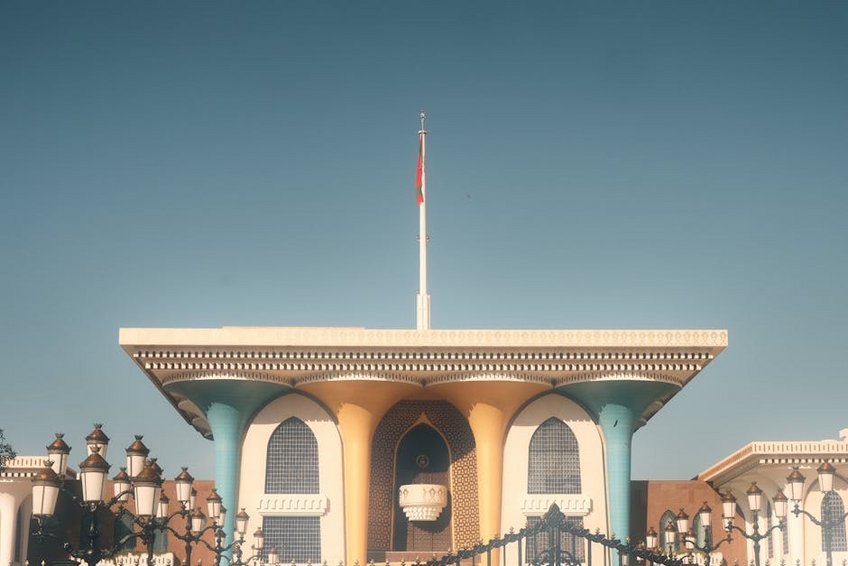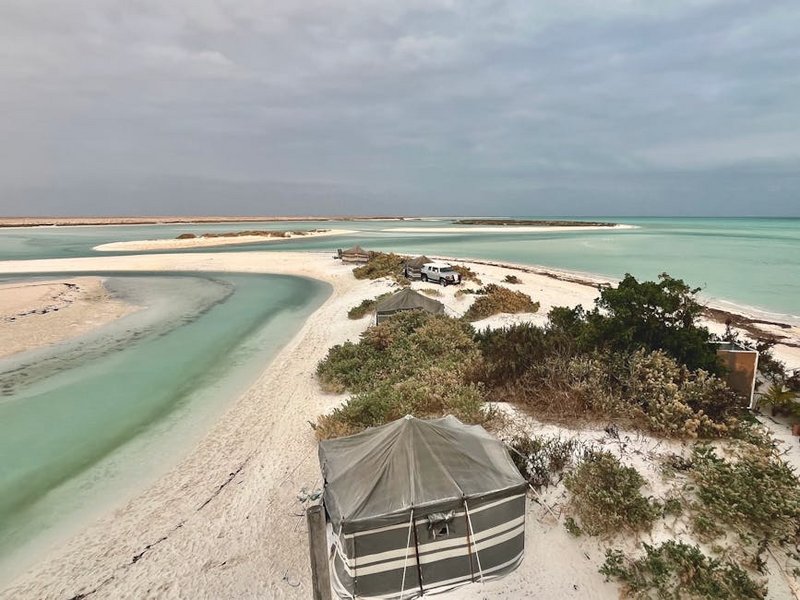Oman Rub al Khali Desert Safari Adventure
An Oman Rub al Khali Desert Safari immerses you in the world’s largest sand desert, spanning southern Arabia with towering dunes and stark beauty. This Empty Quarter expedition reveals ancient Bedouin culture, star-filled night skies, and adrenaline-pumping dune bashing across endless golden landscapes. Our guide covers essential planning, must-see attractions, and practical tips for your Arabian desert journey.
Essential Rub al Khali Information
The Rub al Khali, meaning “Empty Quarter,” covers 250,000 square miles across Oman, Saudi Arabia, UAE, and Yemen. This hyper-arid desert receives less than 1.2 inches annual rainfall with summer temperatures reaching 122°F (50°C). Its immense sand sea contains dunes towering over 800 feet (244 meters) high.
Archaeological evidence shows the region supported lakes and wildlife until 3000 years ago. Bedouin tribes have navigated these sands for centuries using star patterns and camel caravans. Modern desert safaris now make this inaccessible region available to adventurous travelers.
Geography and Climate Details
The Empty Quarter’s terrain varies from massive star dunes to salt flats called sabkhas. Summer temperatures average 104-122°F (40-50°C) while winter brings pleasant 59-77°F (15-25°C) conditions. Nighttime temperatures can drop 30-40 degrees Fahrenheit regardless of season.
Historical Significance
Bedouin culture developed unique survival techniques for this harsh environment. They used falconry for hunting and created intricate tribal navigation systems. The discovery of frankincense trade routes revealed the desert’s historical economic importance.
- Frankincense trade routes crossed the desert for over 2000 years, connecting Arabia with Mediterranean civilizations
- Bedouin tribes developed water conservation methods and seasonal migration patterns for survival
- Modern oil exploration began in the 1930s, though much of the region remains unexplored
- Budget options at $800-1200 include shared tents, basic meals, and standard 4×4 transportation for 2-3 day tours
- Mid-range experiences costing $1200-1800 feature private tents with beds, better food, and more activities like camel riding
- Luxury safaris from $1800-2500 offer air-conditioned tents, gourmet dining, and exclusive activities like private guided dune walks
- Oman Ministry of Tourism
- Lonely Planet Oman Travel Guide
What to Expect
Desert safari vehicles include 4×4 Land Cruisers with experienced drivers navigating steep dune faces. Camps range from basic Bedouin-style tents to luxury establishments with private bathrooms. The remote location means limited connectivity and basic facilities at most sites.
Wildlife sightings might include Arabian oryx, sand foxes, or desert monitors if you’re fortunate. The absolute silence and vast emptiness create a profound sense of isolation. Sunsets paint the dunes in spectacular orange and red hues.

Alt: “rub-al-khali-desert-sand-dunes-sunset-oman”
Planning Your Oman Rub al Khali Desert Safari
Your Oman Rub al Khali Desert Safari requires careful preparation for this remote environment. The best tours operate from October through April when temperatures are manageable. Budget $800-2500 per person for multi-day experiences depending on comfort level.
Most visitors access the desert from Salalah or through desert camps near the Omani border. You’ll need Omani tourist visas available on arrival for many Western passport holders. Travel insurance with desert evacuation coverage is strongly recommended.
Booking through reputable operators ensures proper vehicles, trained guides, and safety equipment. The extreme environment demands respect and adequate preparation. Advance reservations are essential during peak season from November to February.
Best Time to Visit the Empty Quarter
Visit between November and March for ideal 68-86°F (20-30°C) daytime temperatures and minimal rainfall. December and January see the most visitors, requiring bookings 3-4 months in advance. February offers slightly fewer crowds with similar comfortable conditions.
The shoulder months of October and April provide good value with temperatures around 77-95°F (25-35°C). Summer months from May to September are extremely hot, with temperatures exceeding 104°F (40°C) regularly. Some operators don’t run tours during peak summer heat.
Budget Planning and Costs
Desert safari costs vary significantly based on accommodation style and tour duration.
Essential Preparation Checklist
Pack lightweight, loose-fitting clothing in neutral colors, wide-brimmed hats, and high-quality sunglasses. Sturdy closed-toe shoes protect against hot sand, while warm layers are crucial for cold desert nights. Bring twice the water you think you’ll need.
Essential documents include your passport with Omani visa, comprehensive travel insurance documents, and emergency contact information. Book tours at least two months ahead for peak season visits. Inform someone of your itinerary since mobile service is unreliable.
Top Attractions and Desert Activities
The Empty Quarter’s primary appeal lies in its vast, untouched landscapes and traditional Bedouin experiences. Dune bashing in 4×4 vehicles provides thrilling rides across steep sandy slopes. Evening campfires under incredibly clear starry skies create unforgettable memories.
Camel trekking follows ancient Bedouin routes through the dunes, offering peaceful desert perspectives. Visiting authentic Bedouin families reveals their adaptation to this harsh environment. The complete absence of light pollution makes for exceptional stargazing opportunities.
Must-See Highlights
Umm as Samim salt flat creates a surreal white landscape contrasting with orange dunes. The area’s highest dunes near the Saudi border offer panoramic desert views. Traditional Bedouin camps demonstrate centuries-old survival techniques and hospitality customs.
Sunrise and sunset provide the most spectacular photography conditions as light transforms dune colors. Desert wildlife includes rare sightings of Arabian oryx and sand gazelles if you’re fortunate. The absolute silence of the deep desert creates a profound sensory experience.
Hidden Gems and Local Favorites
Small desert oases support surprising palm groves and birdlife away from main routes. Bedouin coffee ceremonies involve roasting beans over fire and serving in small cups. Ancient trade route markers and camel carvings appear on some rock formations.
Local guides know secluded dune areas perfect for private picnics and photography. The boundary between Oman and Saudi Arabia features particularly dramatic dune formations. Full moon nights create magical silver-lit landscapes across the sands.
Desert Adventure Activities
Sandboarding down steep dune faces provides adrenaline-filled fun for active travelers. Nighttime desert walks reveal nocturnal creatures and incredible star visibility. Photography tours capture the desert’s changing light conditions and unique landscapes.
Traditional falconry demonstrations show how Bedouin hunters partnered with these birds. Desert survival skills workshops teach water finding and navigation techniques. Some operators offer overnight camping in remote areas inaccessible to day trippers.
Practical Travel Information
Most desert safaris depart from Salalah or camps near the Oman-UAE border region. Transportation involves 4-6 hour drives from major cities to desert entry points. Accommodation ranges from basic camping to luxury desert resorts with modern amenities.
Booking through established operators ensures proper vehicles, trained guides, and adequate supplies. The extreme environment requires respecting safety protocols and guide instructions. Advance planning is crucial for this remote destination.
| Category | Options/Features | Price Range (USD) |
|---|---|---|
| Accommodation | Basic shared tents to luxury private tents with bathrooms | $150-400/night |
| Transportation | 4×4 vehicles with experienced drivers, fuel, and desert permits | $200-350/day |
| Food & Dining | Basic camp meals to gourmet Bedouin-style feasts | $50-150/day |
| Activities | Camel rides, dune bashing, sandboarding, cultural experiences | $30-100/activity |


